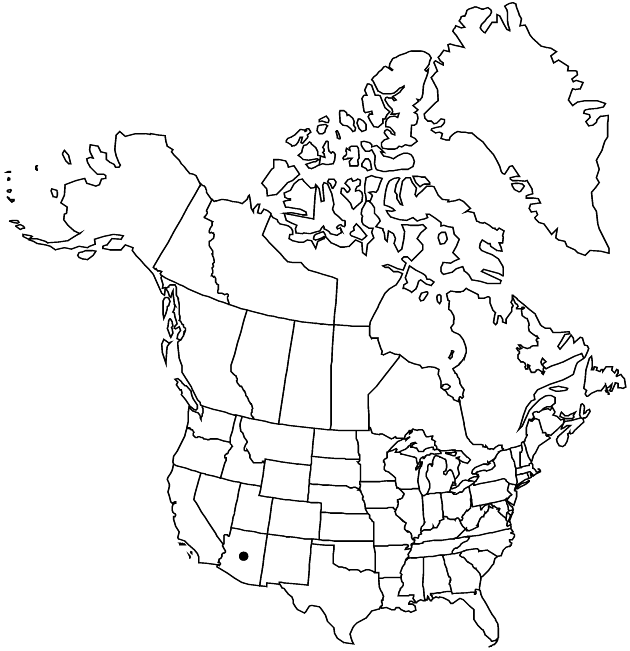Psilactis gentryi
Syst. Bot. 18: 302. 1993.
Annuals, 20–120 cm. Stems and branches often sparsely appressed- or erect-hairy, stipitate-glandular, more densely distally. Distal leaf blades ovate to lanceolate, smallest 5–12 × 2–6 mm, bases cordate to auriculate, clasping. Involucres hemispheric, 5–8 mm. Phyllaries lanceolate to linear-lanceolate, equal or slightly unequal, 4–7 × 0.7–1.2 mm; outer often mostly herbaceous (bases inconspicuously indurate), scarious margins absent or obscured by stipitate glands; inner: bases indurate, margins scarious. Receptacles flat to convex, 4–6 mm diam. Ray florets 30–70; laminae 7–14 × 1–1.5 mm. Disc florets 50–150; corollas 2.5–4.5 mm. Ray cypselae 1.2–2 mm, sparsely to densely appressed-hairy. Disc cypselae 1.2–2.5 mm, sparsely to densely appressed-hairy; pappus bristles 40–50, 2.5–4 mm. 2n = 8 (Mexico).
Phenology: Flowering Sep–Nov.
Habitat: Canyon bottoms, along rocky streambeds
Elevation: 1700–2300 m
Distribution

Ariz., Mexico (Chihuahua, Durango, Hidalgo, Mexico, Sonora).
Discussion
Psilactis gentryi occurs in the Huachuca Mountains of southeastern Arizona.
Selected References
None.